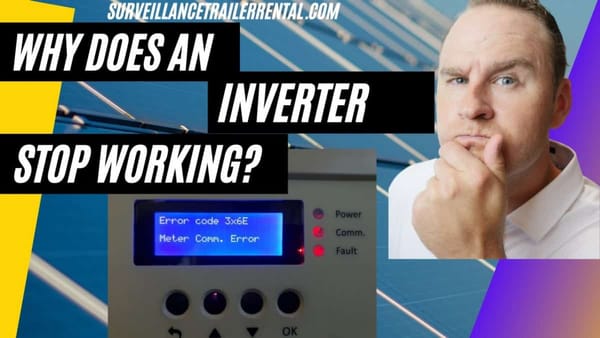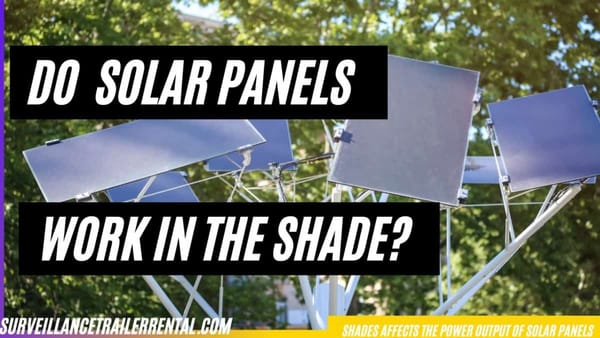Solar Charge Controller Basics
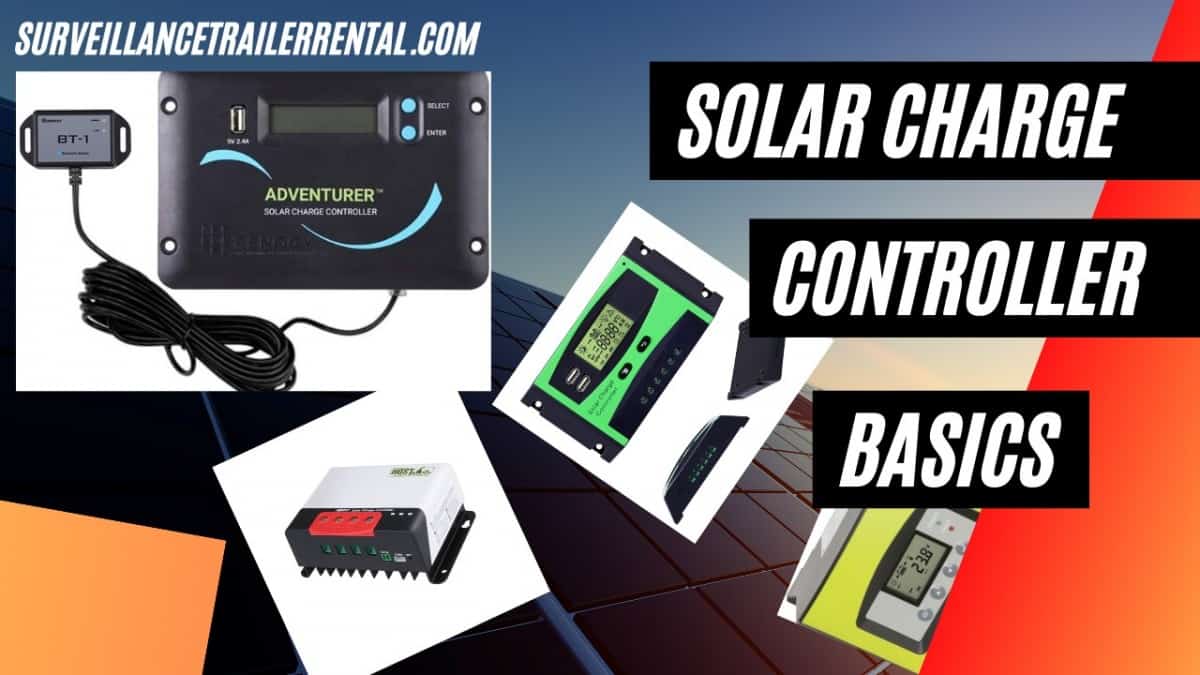
What is a solar charge controller?
A solar charge controller also referred to as a charge regulator is basically a voltage or current regulator that prevents batteries from overcharging. It regulates the current and voltage that the solar panels transmit to the batteries. Most 12-volt panels transmit around 16 to 20 volts. Therefore, if there is no regulation, the batteries will be damaged from overcharging. To fully charge most 12V batteries, they usually require 14 to 14.5V.
Is a charge controller always needed?
It’s not always the case, but it’s usually needed. In general, it is not necessary to have a charge controller when using low maintenance or trickle charge panels like the 1- to 5-watt panels. A rough rule is that when the panel can produce approximately 2 watts or less for each 50 battery amp-hour, then you don’t need one.
For instance, a typical flooded golf car battery can run for 210 amp-hours. So to keep up an entire series of them (12 volts) to maintain or store, you would require a panel with around 4.2 milliwatts. These popular panels of 5 watts are just enough and don’t usually need a charge controller. If you’re keeping AGM deep cycle batteries like the Sun Xtender made by Concorde, then you can choose a smaller 2-to-2-watt panel.
Why are 12-volt panels designed to produce more than 12V?
The obvious question comes up – “why aren’t the panels designed to produce exactly 12 volts?” The reason is that panels that are made to provide 12 volts will only work when they are cool and in perfect conditions. This is not something you can count on in most locations. The panels must provide an additional voltage to ensure that when the sun is low in the sky, or there are clouds, heavy fog, or high temperatures, you can still receive some power from the panel. A fully charged “12-volt” battery is approximately 12.7 volts when it is at rest (around 13.6 to 14.4 when charging). The panel must produce at least that amount even under worst-case conditions.
The panel’s 16 to 20 voltage output is controlled by the charge controller to meet the battery’s current demands. This voltage will vary between 10.5 to 14.6, depending on the charge level of the battery, the kind of battery, what mode the controller operates in, and the temperature. See our battery voltage chart for more details.
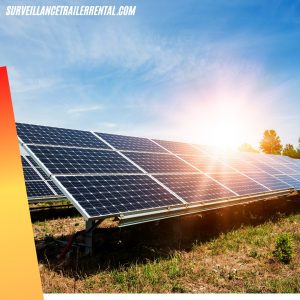
A 12V Solar Panel designed to produce more than 12V
Using high voltage (grid-tie) solar panels
The majority of solar panels with ratings over 140 watts are not typical 12-volt panels and cannot (or at the very least, should not) be used with typical charge controllers. Grid-tie panels have voltages that vary between 21 and 60 volts. Some are standard 24-volt panels, however, the majority of them aren’t.
Implications of using a standard charge controller
Standard (that is, all but the MPPT) models typically use high voltage panels as long as the maximum voltage input of the charge controller isn’t surpassed. However, you’ll be losing a lot of power – between 20 and 60 percent of the panel’s ratings. Charge controllers take the output of the panels and feed it to the battery until it is fully charged, typically around 13.6 to 14.4 volts. A panel can only generate so many amps. So, while the voltage is decreased, the amps from the panel can’t be more than the rated amps. For instance, a 175-watt panel with a rating of 23 volts/7.6 amps will only supply about 7.6 Amps @ 12 V into your battery. Ohms Law states that watt equals voltage multiplied by ampere, which means that your 175-watt panel will only supply about 90 watts to the battery.
Types of charge controllers
There are different types of charge controllers. They range from the smallest 4.5 amp (Sunguard) control to the 60-80 amp MPPT programmable controllers that come with a computer interface. If currents exceed 60 amps, multiple 40-80 amp units can be connected. The majority of battery-powered systems have controls that operate in the 4-60 amp range. However, some MPPT controls, such as the Outback Energy FlexMax can handle up to 80 amps.
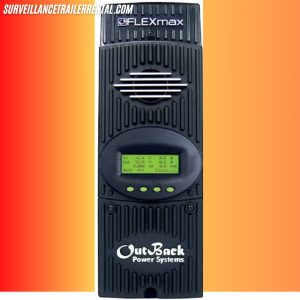
Outback FlexMax can handle up to 80 Amps
Simple 1 or 2-stage controls
They rely on relays and shunt transistors that control the voltage in one or two steps. They basically disconnect or short the solar panel once a certain voltage is attained. These are dinosaurs in practical terms. However, you can still find them on older systems as well as the super cheap ones available online. The only popular thing about them is their reliability. They have little components that there isn’t much to break.
3-stage or PWM
Examples include Morningstar, Xantrex, Blue Sky, Steca, and many others. These are the industry standard. However, you can find older shunt/relay types like those offered by mass marketers and discounters.
Most controllers have an indicator which could be a simple LED, an array of LEDs, or digital meters. Many newer ones, such as the Midnite Classic, Outback Power, Morningstar MPPT, and others have in-built computer interfaces for monitoring and control.
The simplest ones usually have a couple of small LED lamps, which indicate that there is power and you are getting some kind of charge. Most meters will show the current and voltage from the panels, as well as the battery voltage. Additionally, it will display how much current is being drawn from the LOAD terminals.
Equalization
Equalization does something similar to what its name implies. It aims to ensure that all cells in the bank or battery have the same charge. It is a period in which there is an excess charge, which is usually between 15 and 15.5 volts. This will bring all the cells to maximum capacity if there are any cells in the string that are less than the rest. It also stirs up the liquid in the flooded batteries and creates gas bubbles.
Obviously, when you are in an RV or a boat, this does not usually help much unless you’ve been in a parked position for a long time. This is because a normal movement can produce the same effect. In systems with smaller panels or large-sized battery systems, there may not be enough current to really do much bubbling. In many off-grid systems, batteries are also equalized using an electric generator and a charger.
Pulse Width Modulation (PWM)
A few charge controllers have a PWM mode. It is frequently used to facilitate float charging. Instead of sending out a steady output, the charge controller will send short charging pulses to the battery. This is a very quick “on/off” switch. The charge controller constantly monitors the condition of the battery to determine the speed at which it can send pulses and how long (wide) the pulses will be.
In a fully charged battery without any load, it may simply “tick” every few seconds and just send a single pulse to the battery. The pulses from a dead battery will be extremely long and nearly indefinite. Equally, the controller could go into “full-on” mode. Between intervals, the controller will check the charge of the battery and adjusts itself accordingly.
One drawback of PWM is that it can cause interference on radios and TVs due to the sharp pulses it creates.
Low Voltage Disconnect or Load Output
Some charge controllers also have a “LOAD” or LVD output. This output can power smaller loads, such as light bulbs and small appliances. The advantage is that load terminals have LVD that turns off anything connected to the load terminals. This helps prevent running down the battery’s capacity excessively. The LOAD output is typically used to provide power to small, non-critical loads like lights. A few, like the Schneider Electric C12, can also be used as a lighting controller to turn on lights at night, but the Morningstar can’t be used for that purpose. SLC lighting controller is often a better choice. You shouldn’t make use of the LOAD output for large inverters. Inverters can produce very high surge currents that can damage the controller.
Most systems do not require the LVD function as it can only drive smaller loads. This can vary depending on the capacity of the controller. It may vary from 6 to 60 amps. Certain controllers, like the Morningstar SS series, can be used as a load output to drive a high-performance relay. This is used for load control or gen-start as well as other purposes. The LVD or LOAD output is most often used in RV & remote systems. They include cameras, monitors as well as cell phones locations, where the load is small and the location is unattended.
SENSE terminals in a charge controller
Some charge controllers have two “sense” terminals. They have a low current, a fraction of a tenth of a milliamp at most. This prevents voltage drops. The way it works is to “look” at the voltage of the battery and compare it to the output value of the controller. To compensate for a voltage drop between the charge controller and the battery, the “sense” terminal will increase the controller output slightly.
SENSE terminals are only required in situations where there is an extensive wire that runs between the battery and the controller. They carry no current and are pretty small, usually between #20 to #16 AWG. They attach to the controller’s SENSE terminals and onto the same terminals that hold the two charging wires on the battery end.
Learn more about charge controllers on our website.


